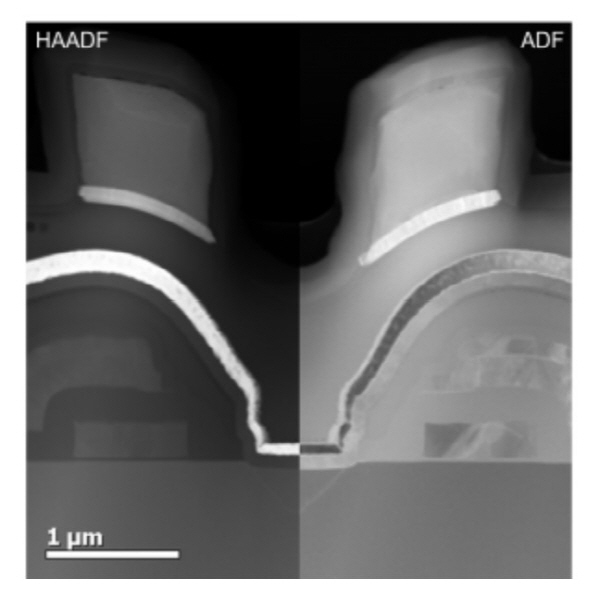STEM Imaging Systems

Advanced STEM Detectors
High-angle annular dark field (HAADF), annular dark field (ADF) plus bright and dark field (BF/DF) detectors for STEM imaging optimized for electron energy loss spectroscopy (EELS).
For EELS mapping and scanning transmission electron microscopy (STEM) imaging, proper control of detector angles is critical in both data collection efficiency and its interpretation. The Advanced STEM detectors are optimized to work with EELS systems to provide seamless collection of the entire angular range of scattered electrons for an enhanced understanding of each sample’s chemical and compositional properties.
- Maximize electron collection using detectors optimized for EELS, diffraction contrast STEM and HAADF STEM applications
- Forward scattered electrons—EELS signal (0 to β), collection angle β regulated by STEM camera length
- Medium-angle electrons—Advanced BF/DF STEM detector (~β to 2x β)
- High-angle electrons—HAADF detector (~2x β to 7x β)
- Calibrate detector offset and system gain to allow absolute intensity measurements
- Low noise electronics and scintillator/photomultiplier tube (PMT) based design
- Detect single electrons at low fluxes
- Record high signal-to-noise ratio images at typical fluxes
- Optimize contrast in real-time using automated PMT gain selection
- Computer control of detector gain and insertion for remote operation
- One-click switching from dark field to bright field STEM mode (model 807)
- Ideal integration with GIF Continuum™, GIF Quantum® and Enfinium™ EELS systems
- Compatible with Gatan cameras and DigiScan™ II system to upgrade existing STEM imaging installations
For more information pertaining to EELS techniques, step-by-step instructions on analytical experiments, and access to downloadable spectra, please visit EELS.info, an educational site that is dedicated to supporting the EELS community.
